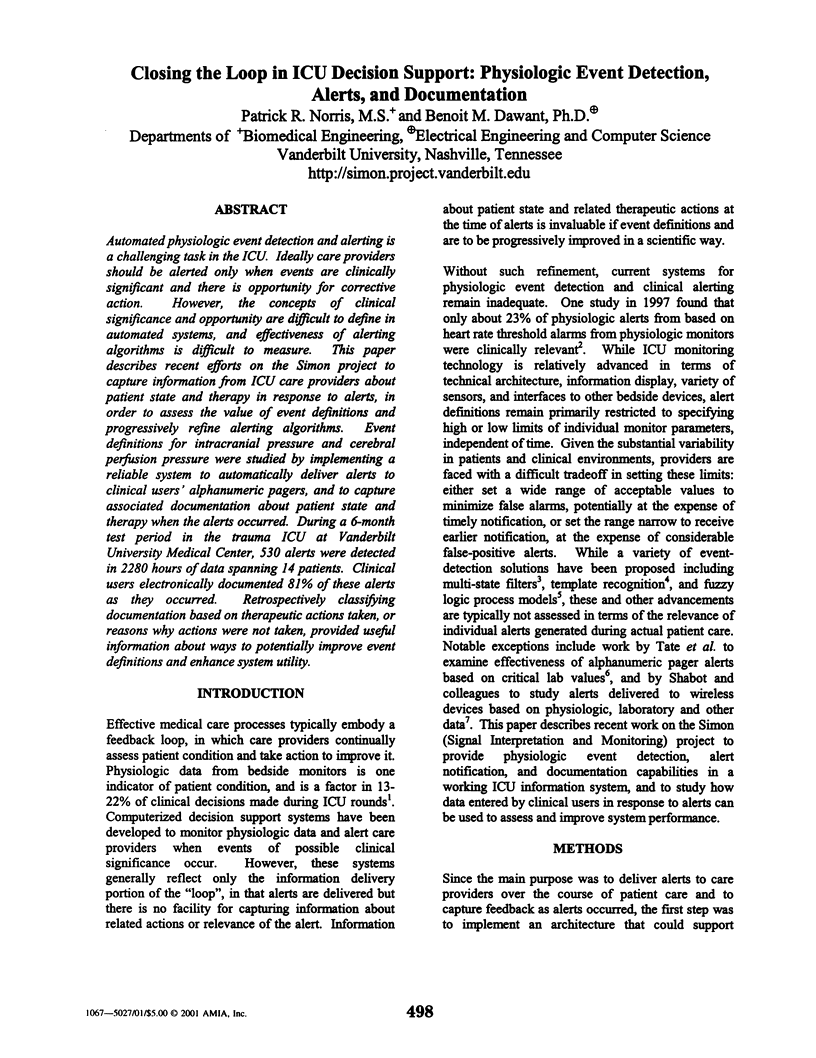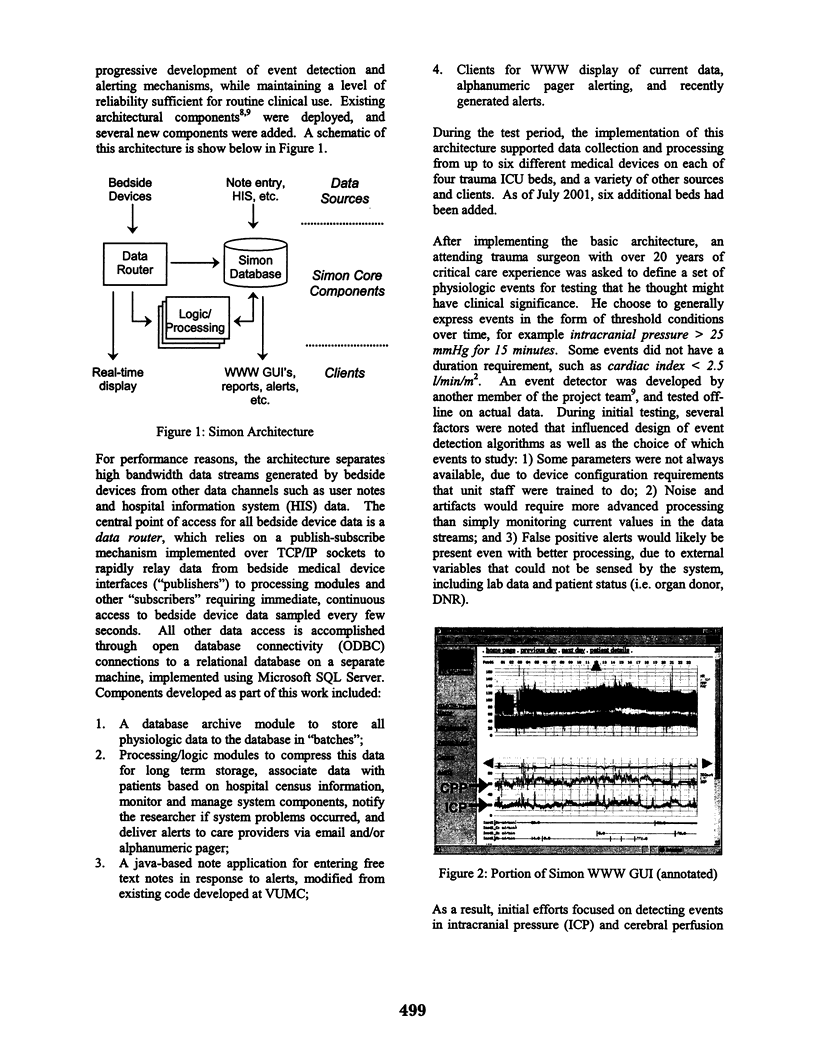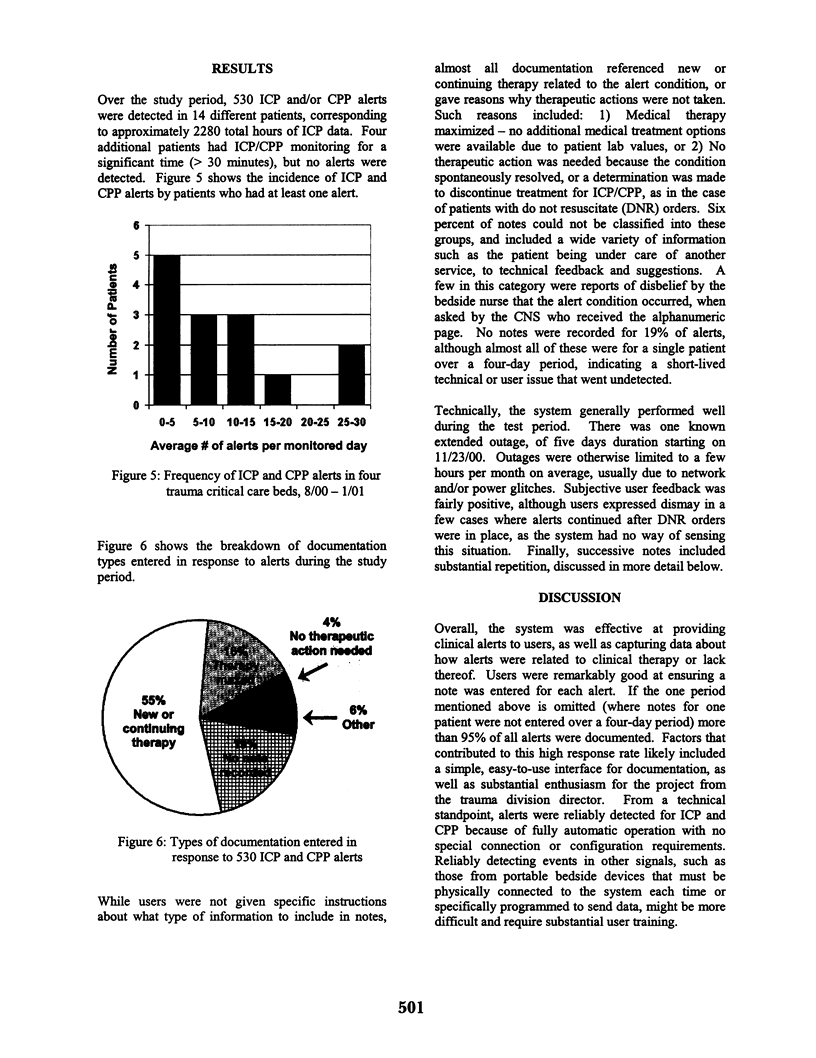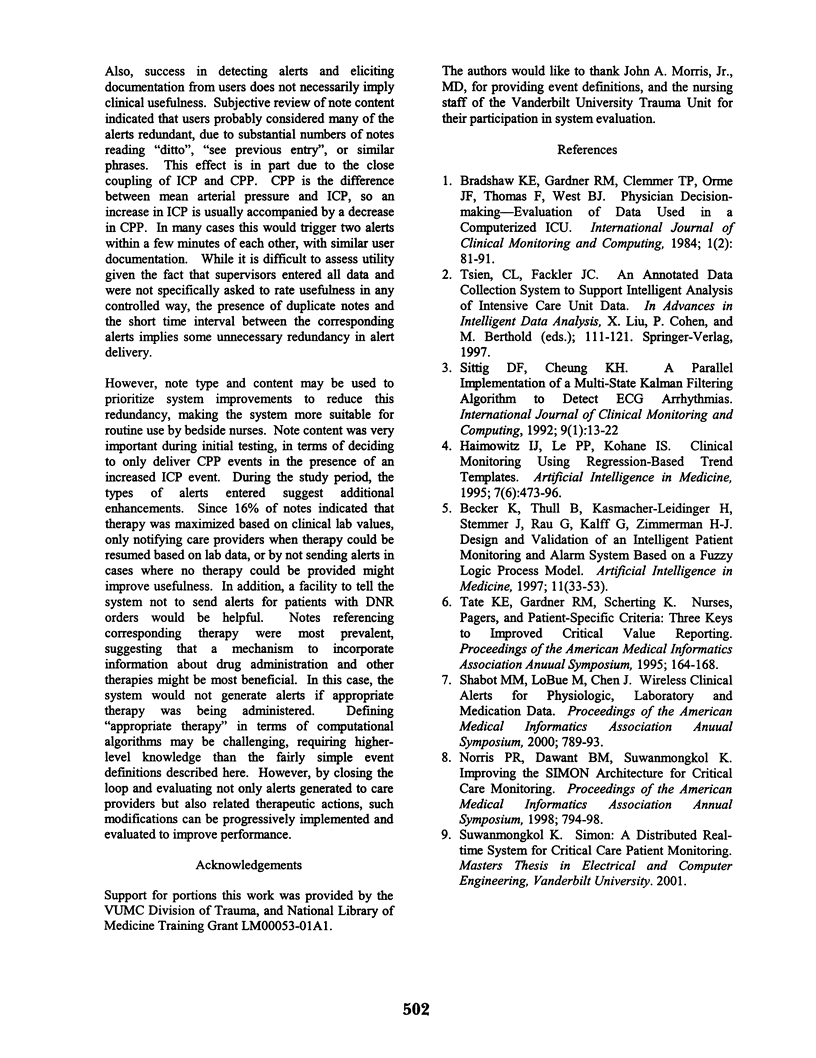Abstract
Automated physiologic event detection and alerting is a challenging task in the ICU. Ideally care providers should be alerted only when events are clinically significant and there is opportunity for corrective action. However, the concepts of clinical significance and opportunity are difficult to define in automated systems, and effectiveness of alerting algorithms is difficult to measure. This paper describes recent efforts on the Simon project to capture information from ICU care providers about patient state and therapy in response to alerts, in order to assess the value of event definitions and progressively refine alerting algorithms. Event definitions for intracranial pressure and cerebral perfusion pressure were studied by implementing a reliable system to automatically deliver alerts to clinical users alphanumeric pagers, and to capture associated documentation about patient state and therapy when the alerts occurred. During a 6-month test period in the trauma ICU at Vanderbilt University Medical Center, 530 alerts were detected in 2280 hours of data spanning 14 patients. Clinical users electronically documented 81% of these alerts as they occurred. Retrospectively classifying documentation based on therapeutic actions taken, or reasons why actions were not taken, provided useful information about ways to potentially improve event definitions and enhance system utility.
Full text
PDF




Selected References
These references are in PubMed. This may not be the complete list of references from this article.
- Becker K., Thull B., Käsmacher-Leidinger H., Stemmer J., Rau G., Kalff G., Zimmermann H. J. Design and validation of an intelligent patient monitoring and alarm system based on a fuzzy logic process model. Artif Intell Med. 1997 Sep;11(1):33–53. doi: 10.1016/s0933-3657(97)00020-1. [DOI] [PubMed] [Google Scholar]
- Bradshaw K. E., Gardner R. M., Clemmer T. P., Orme J. F., Thomas F., West B. J. Physician decision-making--evaluation of data used in a computerized ICU. Int J Clin Monit Comput. 1984;1(2):81–91. doi: 10.1007/BF01872746. [DOI] [PubMed] [Google Scholar]
- Haimowitz I. J., Le P. P., Kohane I. S. Clinical monitoring using regression-based trend templates. Artif Intell Med. 1995 Dec;7(6):473–496. doi: 10.1016/0933-3657(95)00023-6. [DOI] [PubMed] [Google Scholar]
- Shabot M. M., LoBue M., Chen J. Wireless clinical alerts for physiologic, laboratory and medication data. Proc AMIA Symp. 2000:789–793. doi: 10.1109/hicss.2000.926784. [DOI] [PMC free article] [PubMed] [Google Scholar]
- Sittig D. F., Cheung K. H. A parallel implementation of a multi-state Kalman filtering algorithm to detect ECG arrhythmias. Int J Clin Monit Comput. 1992;9(1):13–22. doi: 10.1007/BF01145898. [DOI] [PubMed] [Google Scholar]
- Tate K. E., Gardner R. M., Scherting K. Nurses, pagers, and patient-specific criteria: three keys to improved critical value reporting. Proc Annu Symp Comput Appl Med Care. 1995:164–168. [PMC free article] [PubMed] [Google Scholar]


